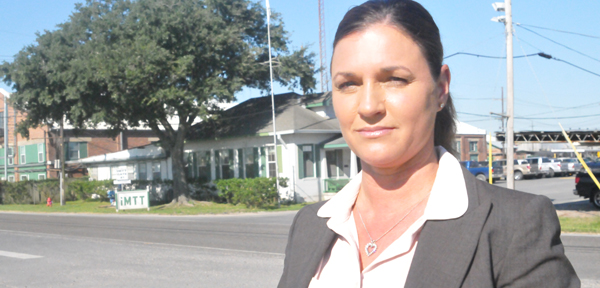
Martha Huckabay, who helped convince the U.S. Environmental Protection Agency (EPA) to crack down on oil refinery emissions, said she did it for her family.
“In June of last year, my entire family was exposed to hydrogen sulfide from an accident at Shell and IMTT,” Huckabay said. “Then I realized it wasn’t just that day but that it had been going on for several years. My son was four at the time and became very sick for about eight weeks – lethargy, vomiting, diarrhea. His name is Dawson Huckabay. My family is still dealing with the effects today.”
On Sept. 29, the EPA released new air standards with tighter restrictions on oil refineries emissions and particularly on benzene, a chemical known to cause cancer. The new rule mandated, for the first time, “fenceline” monitoring that requires refineries to install air monitors on the site to measure benzene emissions and act when the levels exceed allowable levels.
It’s certainly a welcome change for Huckabay, one she helped lobby for as second vice president and chaplain of St. Rose Community One Voice, but one that she said is only the beginning of what needs to be done in St. Rose.
“Although this new refinery rule is good progress and a step in the right direction, we still have a long fight ahead of us,” she said of continuing efforts through commitment and prayer. “This rule will monitor for benzene, a known carcinogen. Our problem in St. Rose has been release of the chemical hydrogen sulfide – a neurotoxin. If they’re not allowing hydrogen sulfide to be monitored, there’s obviously a bigger problem.”
Huckabay was among a group of St. Rose residents who banded together in the wake of a 10-day chemical release from IMTT’s St. Rose facility reported in June of last year.
Anne Rolfes, founding director of the New Orleans-based environmental group, the Louisiana Bucket Bridge (LABB), said results from a public records request with the Louisiana Department of Environmental Quality (LDEQ) showed high levels of hydrogen sulfide had been released in surrounding neighborhoods.
The strong odor was caused by crude feedstock with a high sulphur content that the Shell plant on the IMTT site was using in asphalt processing, according to LDEQ Secretary Greg Langley.
Although Rolfes said the pollutant levels were just at or below LDEQ allowable levels, they did exceed EPA levels for when toxins are considered harmful and could cause health issues.
n invitation by Earthjustice and the Louisiana Bucket Brigade, Huckabay went twice to Washington, D.C. with expenses covered by the Archdiocese, and met with EPA administrator Regina “Gina” McCarthy to relay her experiences firsthand of living near companies like IMMT and dealing with hydrogen sulfide pollution.
“If we’re going to give industry permits to release these emissions, then our goal is to have all of their emissions monitored,” Huckabay said. “Whatever they’re permitted to release, we want it to be monitored, that’s our goal. I’m excited and optimistic about the new ruling. But this is not over by any means.”
In St. Rose, Huckabay recounted their ongoing struggles with exposure and related illnesses.
This was why she and her group have stayed the course on pressing the EPA to tighten controls on these emissions.“I want to thank EPA for listening to us,” Huckabay said. “I was thankful to be a part of it. We hope that this would be the beginning of something bigger and better to really protect people, to guarantee the right to breathe clean air.”




Be the first to comment